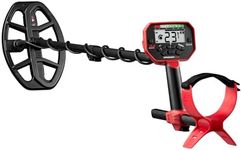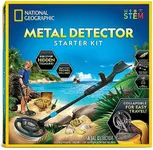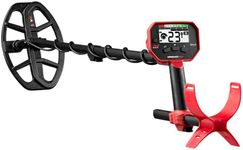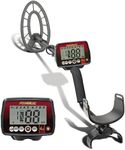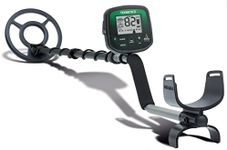Buying Guide for the Best Beginner Metal Detector
Choosing a beginner metal detector can be exciting, but it's important to focus on features that make your first experiences enjoyable and successful. As a beginner, you want a device that's easy to use, reliable, and suitable for the types of places you plan to search, like parks, beaches, or fields. Understanding the main specifications will help you find a detector that matches your interests and skill level, making your treasure hunting both fun and rewarding.Operating FrequencyOperating frequency refers to how many times per second the detector sends signals into the ground. This is important because it affects what types of metals and objects the detector is best at finding. Lower frequencies (around 5-8 kHz) are better for finding larger, deeper objects like coins and relics, while higher frequencies (10-20 kHz or more) are more sensitive to smaller, shallow items like jewelry or small gold nuggets. For beginners, a mid-range frequency (around 6-12 kHz) is usually a good balance, as it allows you to find a variety of items without being too specialized.
DiscriminationDiscrimination is the detector's ability to distinguish between different types of metals, such as iron, aluminum, silver, or gold. This feature is important because it helps you avoid digging up trash like bottle caps or nails. Discrimination settings can range from simple (basic iron rejection) to more advanced (customizable metal types). As a beginner, look for a detector with easy-to-use discrimination controls so you can start by ignoring obvious junk and gradually learn to fine-tune your searches as you gain experience.
Ground BalanceGround balance is a feature that helps the detector ignore signals from naturally occurring minerals in the soil, which can cause false readings. This is important because different locations have different soil types, and too many false signals can be frustrating. Some detectors have automatic ground balance, which adjusts itself, while others require manual adjustment. For beginners, automatic or preset ground balance is usually best, as it makes the detector easier to use in a variety of environments.
Weight and ErgonomicsWeight and ergonomics refer to how heavy the detector is and how comfortable it is to hold and use for long periods. This is important because a heavy or awkward detector can quickly become tiring, especially for beginners. Lighter detectors (under 3 pounds) are easier to handle and are a good choice for most new users, especially children or those who plan to search for several hours at a time. Make sure the handle and armrest feel comfortable and adjustable to your height.
Display and ControlsThe display and controls are how you interact with the detector, adjust settings, and read information about what you find. A clear, easy-to-read display and simple controls are important for beginners, as they make learning and using the detector much less confusing. Look for a detector with a straightforward interface, clear icons or numbers, and buttons or knobs that are easy to understand. This will help you focus on searching rather than struggling with complicated menus.
Water ResistanceWater resistance means how well the detector can handle wet conditions, such as rain, puddles, or shallow water. This is important if you plan to search on beaches, near rivers, or in damp environments. Some detectors are only splash-proof, while others have waterproof search coils or are fully submersible. For most beginners, a detector with a waterproof coil is sufficient, allowing you to search in wet grass or shallow water without worry.


